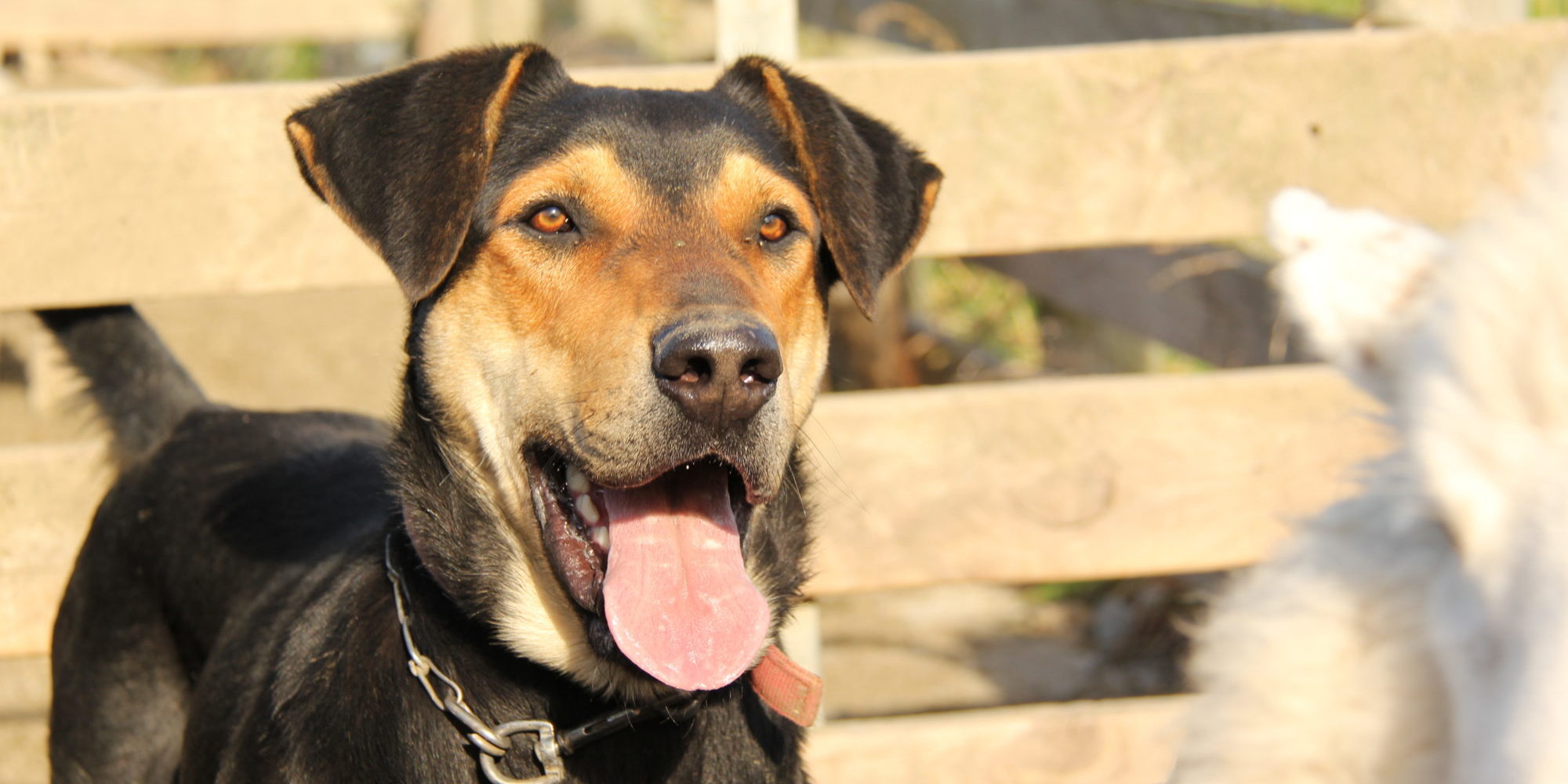Dogs do not perspire the way humans do; in fact, the only sweat glands that they have are on the pads of their feet. Dogs pant to cool themselves. If the surrounding air is not considerably cooler than the animals’ body temperature – as in the case of a hot, stuffy automobile – the cooling system will not work and heatstroke can occur.
What are the signs of heatstroke?
Signs of heatstroke include:
- Increased heart rate
- Excessive panting
- Increased salivation
- Bright red tongue
- Red or pale gums
- Thick, sticky saliva
- Depression
- Weakness
- Dizziness
- Vomiting (sometimes with blood)
- Diarrhea
As heatstroke progresses, it can cause seizures, coma, cardiac arrest, and death.
What should I do if my dog gets heatstroke?
Remove your dog from the hot area immediately. While transporting him immediately to your veterinarian, lower his temperature by placing cool, wet towels over the back of the neck, under the forelimbs, and in the groin area. If possible, increase air movement around him with a fan/a/c. Be careful, however, as using very cold water can actually be counterproductive. CAUTION: Cooling too quickly and especially allowing his body temperature to become too low can cause other life-threatening medical conditions. Even if your dog appears to be recovering, take him to your veterinarian as soon as possible, he should still be examined since he may be dehydrated or have other complications.
How can heatstroke be prevented?
- Keep pets with predisposing conditions like heart disease, obesity, older age, or breathing problems cool and in the shade. Even normal activity for these pets can be harmful.
- Provide access to water at all times.
- Do not leave your pet in a hot parked car even if you’re in the shade or will only be gone a short time. The temperature inside a parked car can quickly reach up to 50 degrees.
- Make sure outside dogs have access to shade.
- On a hot day, restrict exercise and don’t take your dog jogging with you. Too much exercise when the weather is very hot can be dangerous.
- Do not muzzle your dog.
- Avoid places like the beach and especially concrete or asphalt areas where heat is reflected and there is no access to shade.
- Wetting down your dog with cool water or allowing him to swim can help maintain a normal body temperature.
- Move your dog to a cool area of the house. Air conditioning is one of the best ways to keep a dog cool, but is not always dependable.






